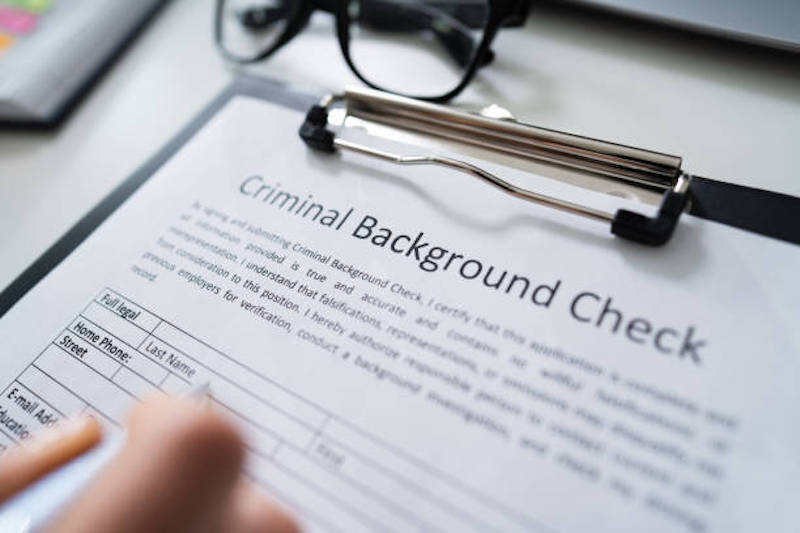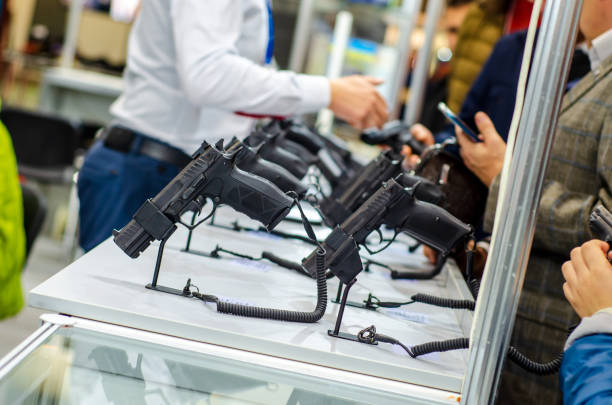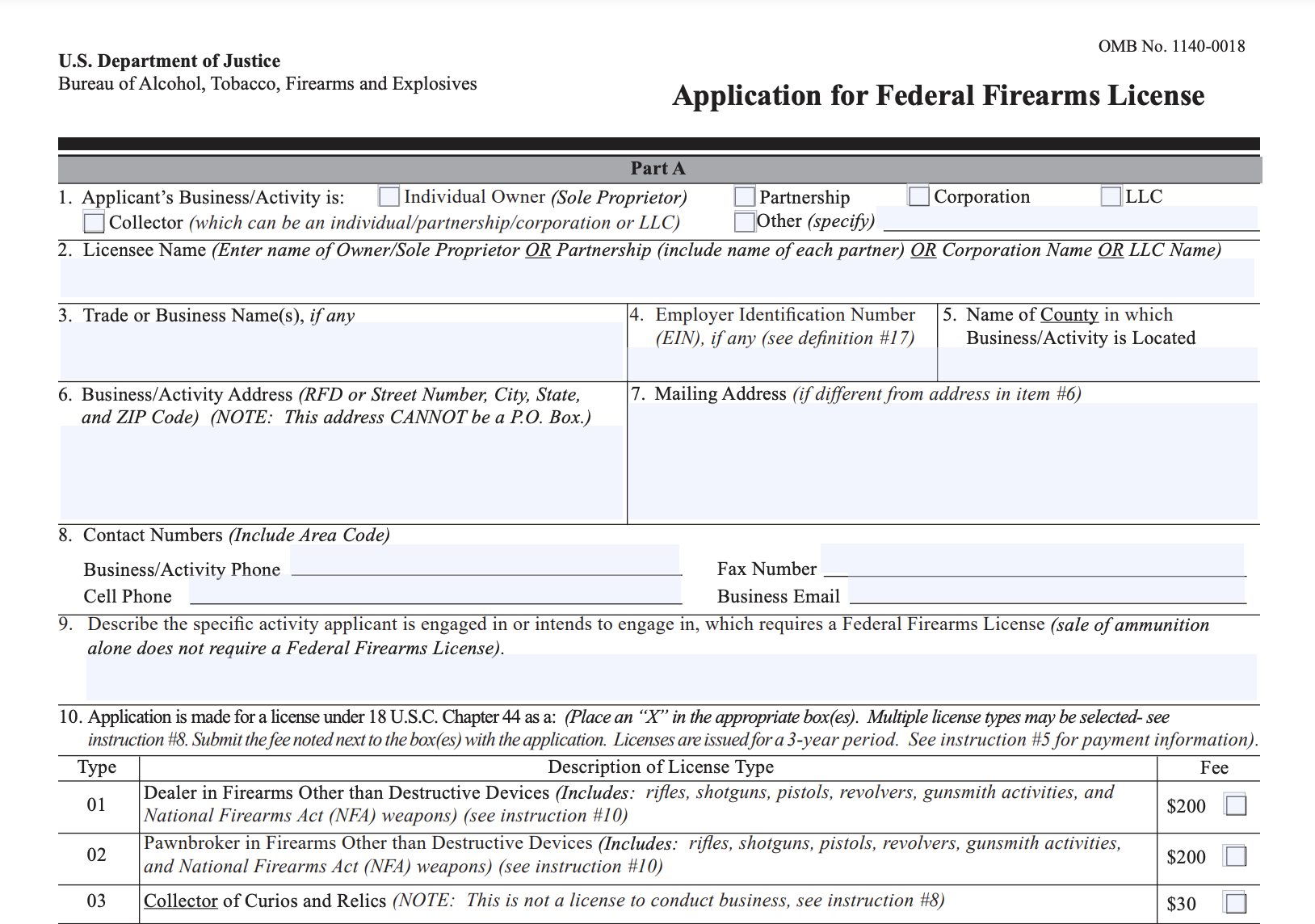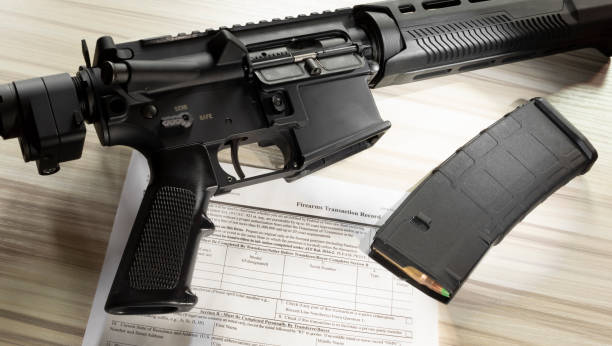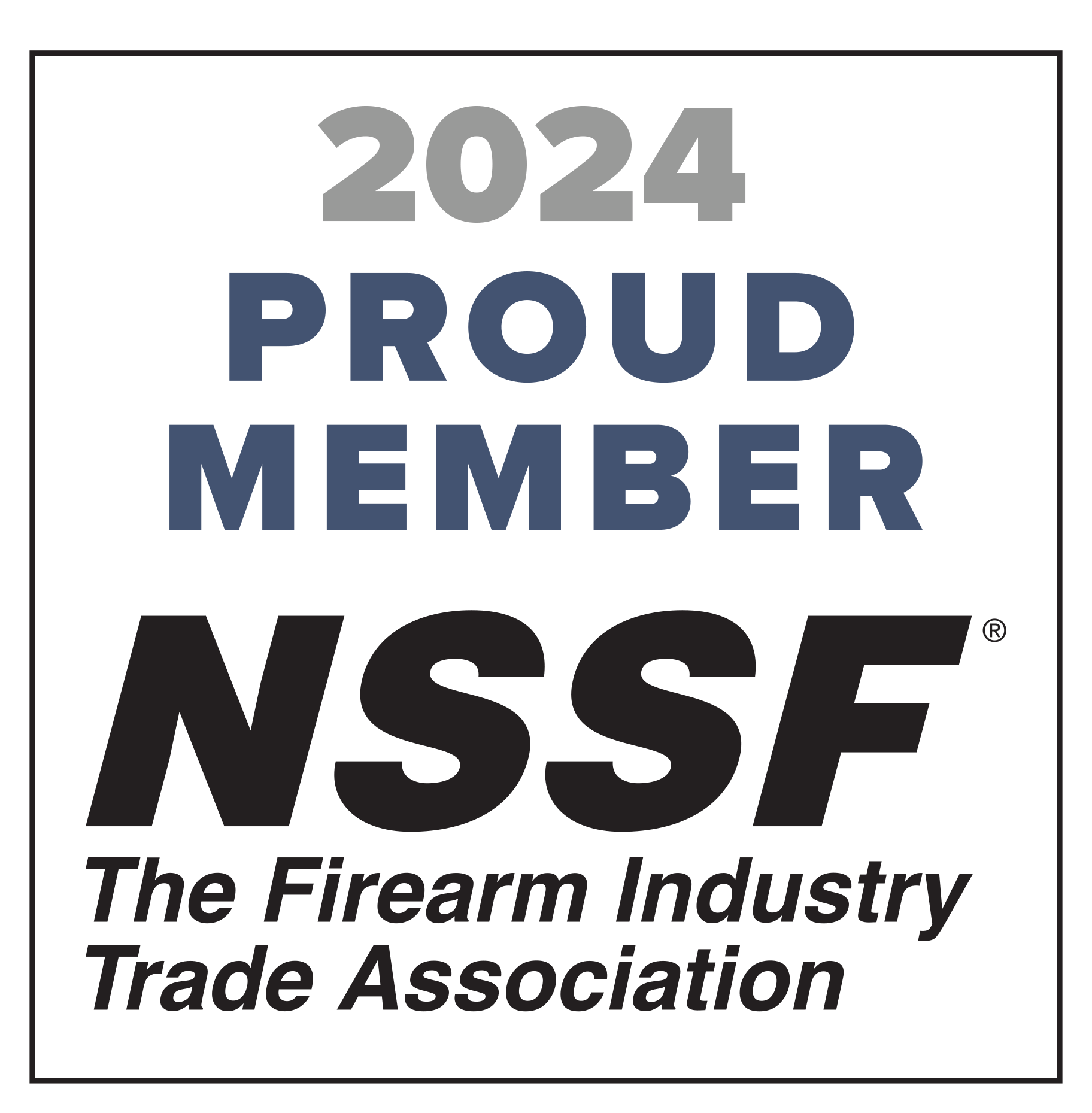These recordkeeping best practices will streamline your workflow and prevent inaccurate errors.
As a federal firearms licensee, you have an obligation to track the serial number of every firearm that passes through your business. In the event of criminal activity, law enforcement will trace the serial number of a firearm from the manufacturer, through any vendors, and hopefully to the person who committed the crime. There is no national firearm registry, so without the help of the FFLs, law enforcement would struggle to find suspected criminals.
It’s imperative that you accurately record all of your transactions. The primary purpose of the ATF inspection program is to ensure all FFLs are maintaining accurate records so the data is available for law enforcement.
If your information is inaccurate when law enforcement comes for it, you may inadvertently help a…
Recordkeeping Best Practices
You’re A&D book isn’t a process. It’s just a report. It captures the information that people collect. If the people who operate the business don’t take their recordkeeping seriously, the A&D book (or any recordkeeping tool) won’t be accurate. These best practices will ensure your information is as accurate as possible.
1. Complete your records at the time of the sale.
It’s important to input all of your information while the customer is in front of you. This is the only time you’ll be able to request additional information or clarification from the buyer.
A common mistake that sellers make is not verifying that the information the buyer has entered in Section A of form 4473 matches the information provided by the buyer.
Your goal is to quickly process the customer, so you assume that the information matches and you continue on with the sale. Here are just a few ways that can go wrong:
- The buyer handwriting is illegible
- The copies of the buyers documents are illegible
- The address on the documentation provided by the buyer and what was
written on the Form 4473 do not match - The buyer failed to fully complete the Form 4473
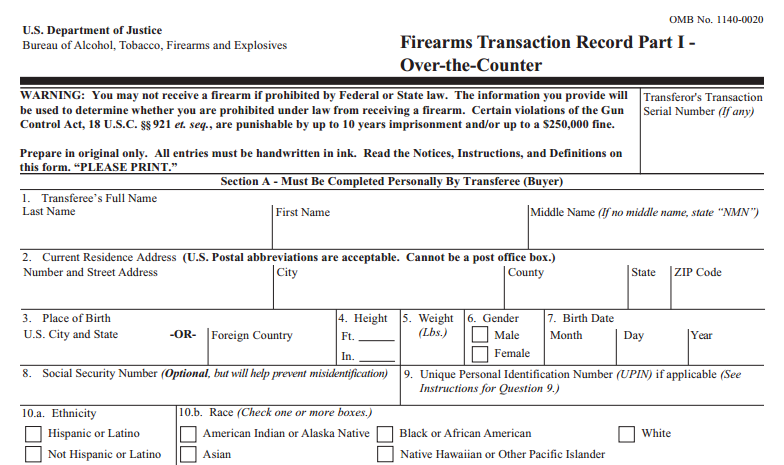
Double check every field, no matter how trivial.
Verifying and double checking all of the buyers information before they leave will improve accuracy and reduce errors.
2. Keep accurate inventory.
When you receive and check in new firearms you should always verify that the information on the packaging matches what is marked on the firearm inside the box. When you receive new firearms you are required to add them to your A&D record no later than the close of the next business day. Part of this information includes the manufacturer, importer, model, caliber, type, and serial number. All of this information should be found on the firearm.
All unsold firearms that you have acquired should be in your possession. All unsold firearms should also be in your A&D records. If a firearm is missing from either you need to figure out what happened immediately. If the firearm turns out to be lost or stolen then it must be reported to the Bureau of ATF National Tracing Center on Form 3310.11. If it turns out a mistake was made you need to fix it immediately as well.
Keep track of where your firearms are. It’s a good idea to implement locations. For example, designate Display Case 1, Display Case 2, Safe 3, Rack, 3, Shelf 2, etc. Use whatever works for your business. You can manually keep track of these locations or you can use software like FastBound to help do this for you.
3. Use a checklist to control your workflow.
Often, the simple, boring solution is the most effective.
Even though you’ve sold hundreds of firearms in the past and your employees are well trained, mistakes an inevitable. You will skip steps, process your records in a different order, or say “I’ll come back to this later.” These deviations from your usual workflow are the points that most likely cause errors.
A checklist isn’t fancy, but it gets the job done. It prevents you or an employee from skipping steps in your process. It’s a simple way to map out the flow of each transaction so each form is completed and every piece of information is included. Once you’ve completed a transaction, a quick read of the checklist will remind you of any areas you skipped, missed, or put off until the end.
Checklists are so powerful, in fact, that nurses at hospitals in Michigan have saved 1,500 lives with just one five-step checklist to treat infections. These were veteran nurses who knew the procedure, but were regularly skipping steps before they had a checklist.
Think about that for a second: no technological improvement or cutting-edge procedure was developed. All they used was a checklist. It would be silly to not use such a powerful tool for your recordkeeping process.
4. Use electronic payments as much as possible.
An excellent way to strengthen your recordkeeping is to collect payments electronically as much as possible. Accept credit cards, debit cards, and bank transfers whenever you can.
The intermediary financial institutions will create their own records of each transaction. It’s more difficult for a person to inaccurately represent themselves to a bank than a firearms dealer, so the information found with the electronic payment is likely accurate.
If you have reason to think that the information in your bound book or A&D software is incorrect, you can compare it against the payment record. Of course, you’ll want to confirm any discrepancies with the customer before considering the matter settled.
I am not, however, suggesting that you should turn away sales from anyone who wants to pay in cash. Business is business and you have to take every sale you can get. Electronic payments only serve as a backup in case your other records are incomplete or inaccurate.
5. Spot check your employees.

Photo credit: colonialshooting.com
Employees are a necessary part of growing a business. Without them, you wouldn’t be able to achieve a higher volume of sales. But employing people who will act on behalf of your federal firearms license comes with its own challenges.
No matter how trustworthy, honest, and hardworking your staff may be, no one will respect your compliance as much as you. If an employee fails to record a key piece of information, you will pay the consequences.
First, everyone should use the same workflow to sell or receive a firearm so the process is simple and questions can be answered by anyone.
Second, regularly monitor your employees as they go through the sales process. Are they asking the right questions? Are they following your checklist? Have they skipped any steps or created any potential errors?
Third, spot check their records occasionally without their knowledge. Go through the bound book and supplementary forms to make sure every piece of data is completed. Make a few comparisons. Does the information match the buyer’s license? Have any questions been answered that should have prohibited a sale? Is there a copy of the background check on file?
Even the best employees make mistakes. Regular checking keeps everyone thorough and honest.
6. Replace your bound books with software
Acquisition and disposition software for gun stores replaces all of your other compliance solutions. With a single piece of software, you can take control of your workflow and ensure that you collect all of the necessary information. This is the single most effective way to keep accurate records.
A&D software offers unlimited bound books, so you can track your inventory, trade-ins, purchases, consignment, gunsmithing, and NFA firearms separately if you choose. It uses a streamlined, task-oriented workflow to prevent mistakes. Those checklists I mentioned earlier won’t be necessary.
The software is always up to date, so you don’t need to stay abreast of regulation changes. No A&D software is approved or certified by the ATF, although many claim to be.
If your paper bound book were to fall into the trash, be mistakenly left with someone, or find itself covered in coffee or ink stains, your records would be lost. Bound book software, however, is backed up every day, so there’s no chance of losing your data.
(It’s worth noting that our A&D software, FastBound, comes with a guaranteed legal defense if the ATF takes administrative action for any violates related to the software.)
Going Forward
Accuracy is key to staying compliant with regulations and off the ATF’s radar. It’s dependent upon the controls you put in place; the process that you and your employees go through each time you make a sale or take in new inventory. Hopefully you’ll use these practices to tighten your process.


